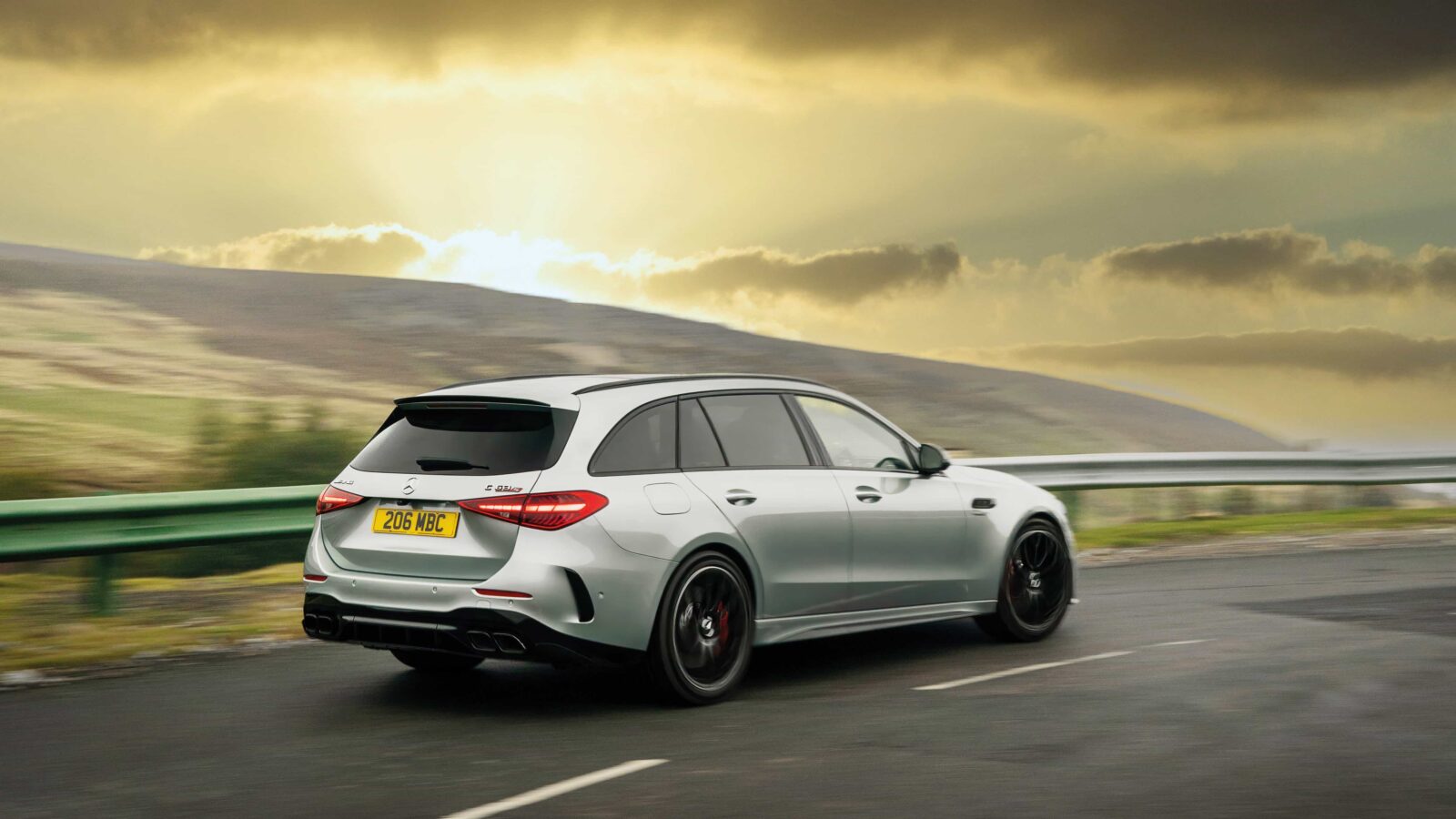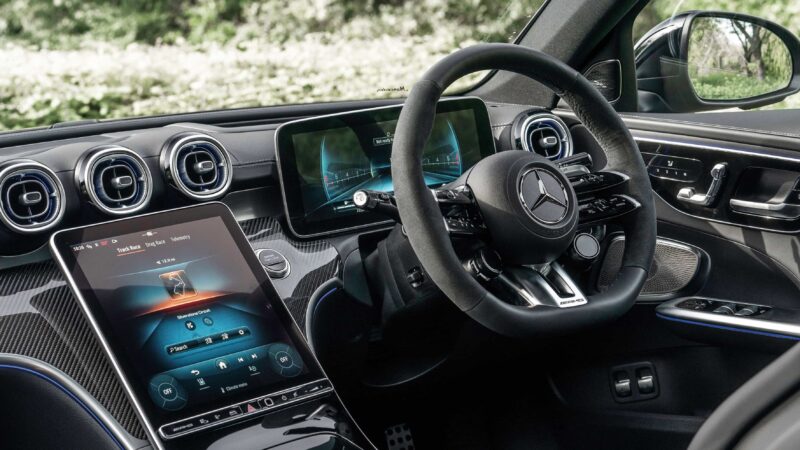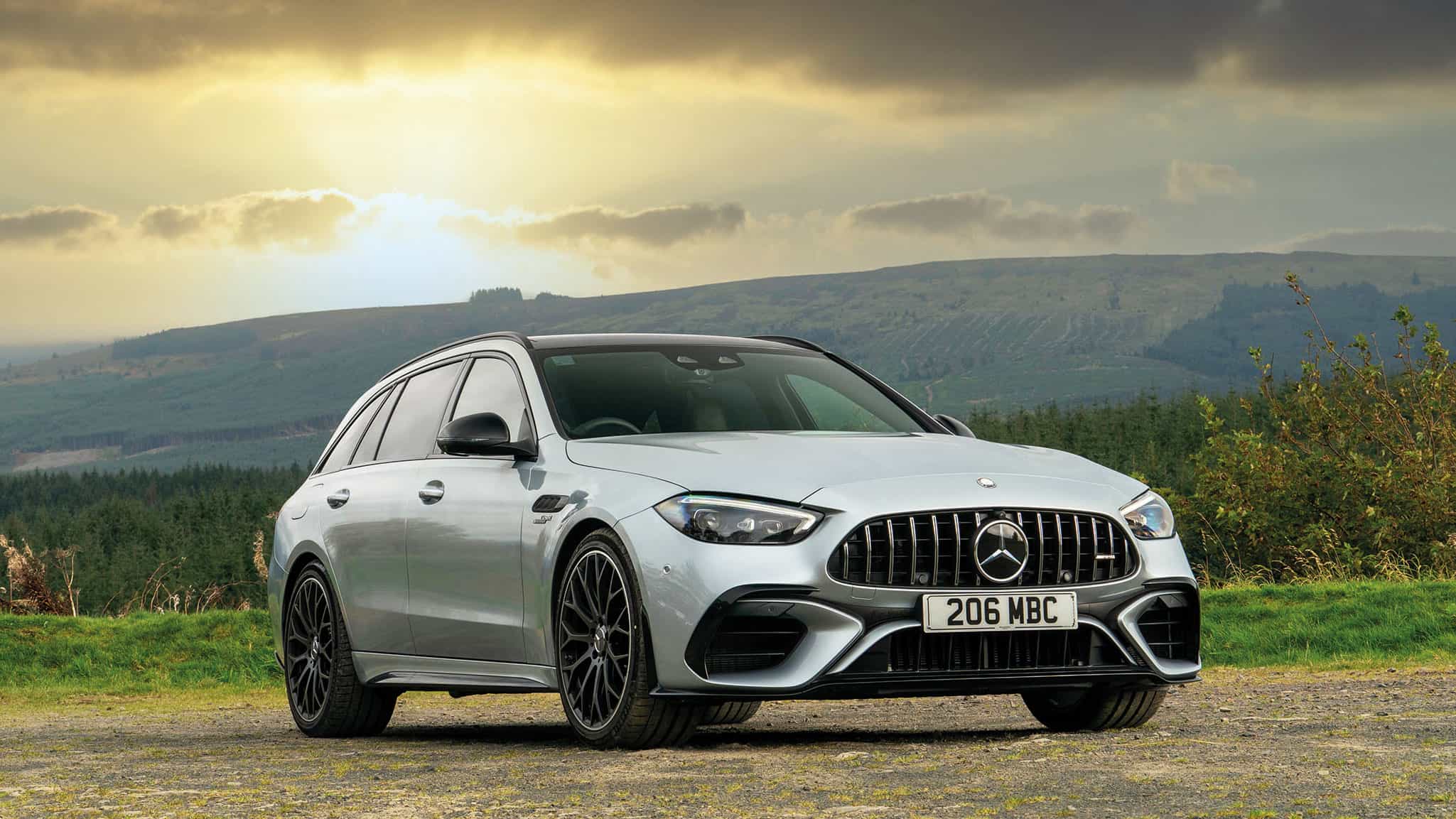Mercedes-AMG C 63 review: why this car is a massive mistake
They can’t all be winners. Andrew Frankel does his best to pluck the positives from the (fairly) new Mercedes-AMG C 63 Estate

An estate that offers less luggage space than a VW Golf is just one of the C 63’s downsides...
This might be the most-late review of an important new car that I’ve ever written. And there is perhaps something to be learned in that. This new ultra-high-performance estate with its saloon sibling was announced in September 2022, with the international press launch taking place before the end of that year. But it is only now that cars have started to find their way onto Mercedes’ UK press fleet. And after the slew of not-exactly glowing reports from the original press drive, I can’t say I blame Mercedes for not wanting to rush it out to the rest of the media who’d not yet had the opportunity to drive it.
It was always going to be a hard sell. Mercedes could talk all it liked about the car’s vast new power, up from 503bhp to no less than 671bhp, and its transformed performance (0-62mph down from a scarcely shabby 4.1sec to a supercar-worrying 3.4sec) but all we saw was a car with literally half the engine of its predecessor (replacing a 4-litre V8 with a 2-litre straight four from the same modular family) with the shortfall and more made up not simply by winding up the ICE engine to an unprecedented 239bhp per litre, but also then adding a massive slug of hybrid-driven electrical power. Then add also its mass ballooning by one-third of a tonne, the largest model for model weight gain I can recall of any car.
“Try not to recall the way its predecessor made you feel”
Now, at last, I’ve spent a week in one. And it’s fascinating. Apart from the fact that it looks really good, I’d say the first impressions are almost universally bad, which might go some way to explaining the kicking it got in some quarter of the press on the back of short initial press drives back in 2022. It’s a plug-in hybrid, but the claimed electric range is just seven miles, enough to get you past your neighbours in silence for sure, but not much further. But it couldn’t really be any extra than that or even more of the boot would have been lost, which comes with a big shelf in it, and that’s before you’ve put the charging cables on top because they can’t be stored underneath. This estate car, note estate, has a boot capacity of 320 litres. A Volkswagen Golf – not an estate – offers 380 litres.
From under the bonnet where once there was a thundering V8, there is now a four-cylinder blare of no great distinction at all, and despite the fact that Mercedes has thrown every technological trick at its disposal at the chassis, including very trick dampers, all-wheel drive and rear-wheel steering, it can at best mitigate the effects of all that additional mass. It absolutely cannot be disguised.

It’s not all doom and gloom – the touchscreen system outclasses everything else our reviewer has experienced
But there are also some things about this car you won’t discover on a quick out and back from a luxury hotel on roads you don’t know and which bear no relation to those which you and most of your readers drive upon. Such as the fact that it is immensely comfortable on a long run, despite the apparent hardness of its ‘performance’ seats, or that the multimedia works better than any other touchscreen-based system I know.
And when you drive it as hard as you safely can, the engine note alters – it sharpens and becomes quite invigorating, while the handling is never less than accurate, and the steering more informative than you’d credit a car with that kind of mass over its front wheels. You get used to its ways, take into account its foibles, cover for its limitations and then, after a while, you start to look more kindly upon it.
Just try not to recall the way its predecessor made you feel on exactly the same stretches of road. And really there is no comparison. Perhaps there could be some strange justification if this were a car which provided not only such power, but coupled it with 40mpg consumption wherever you go. But it doesn’t: the best I managed was 28mpg on a very gentle run. Use the car at all properly and you’ll be in the teens in a trice. Which is little, if any, better than the last one.
What this car is, and it gives me no pleasure to say it, is a mistake and goodness knows, we all make ’em. The frustration is you know it’s only got one thing wrong, but that thing is the author of all its troubles. I have read online in enough places to attach some credence to stories that the car is struggling to find its way beyond dealer forecourts and when you consider that no other manufacturer makes four-cylinder cars anything like this expensive – away from Mercedes you’re looking at the £81,000 First Edition Lotus Emira – that is perhaps not such a great surprise.
When asked if it will retain the engine, Mercedes bigwigs have literally no choice but to say “of course” because to do anything else would be not so much to kick its own product when it’s down, as kill it stone dead. But we know the V8 fits and in a couple of years’ time the car will be due its mid-life facelift. We know already the four-cylinder engine has been pulled from at least one new car that was due to receive it, and been replaced by the V8. In short I’ll eat this laptop if the second generation of W206 C-Class doesn’t go the same way. Frankly, it needs to.
Mercedes-AMG C 63 Estate
- Price £101,105
- Engine 2 litres, four cylinders, petrol, turbocharged, hybrid
- Power 671bhp
- Torque 752lb ft
- Weight 2115kg (DIN)
- Power to weight 317bhp per tonne
- Transmission Nine-speed double clutch, four-wheel drive
- 0-60mph 3.4sec
- Top speed 168mph
- Economy 38.7mpg
- CO2 156g/km
- Verdict How the mighty has fallen.

